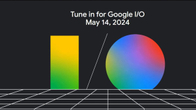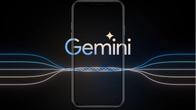The Google Pixel 8 might have replaced the Pixel 7 (review) in Google’s flagship lineup, but the latter continues to be a dependable choice thanks to its pricing and enticing offers. While the handset is listed on the partnered e-commerce platform Flipkart at Rs 49,999, the recent festive sale saw Pixel 7‘s price in India plummet to as low as Rs 36,499. This significantly undercuts its successor, the Google Pixel 8 (review), which shares several similarities.
If you have been torn between the two, this article highlights the practical distinctions between the Google Pixel 7 and Pixel 8 to help you make an informed decision.
Design
The Google Pixel 8 and Pixel 7 look strikingly similar. Both sport a sleek glass back, a sturdy aluminium frame, and the signature rear camera visor, setting them apart in a crowd. While the overall feel when holding these devices is largely the same, the Pixel 8’s gracefully curved corners and compact form factor make it exceptionally well-suited for one-handed use.
With Pixel 7, you might have to resort to some finger gymnastics to reach the top corners. But, other than that, they both are equally sturdy and durable. The handsets are IP68 water and dust-resistance certified and equipped with Corning Gorilla Victus Glass. They also boast convenient features like wireless charging, an in-display fingerprint scanner, a USB Type-C port for charging, and stereo speakers.
Notably, if you’ve been using either of these devices without a case, it’s advisable to take extra care of the camera visor. I observed the colour on the Pixel 8 beginning to wear off around the edges of the camera visor after only a few weeks of use.
Display
When it comes to display, the Pixel 8 and Pixel 7 both sport a vibrant OLED panel with FHD+ resolution and a centred punch-hole for the selfie camera. Credit where it is due, animations on the Pixel 8 look smoother than the Pixel 7, thanks to the 120Hz refresh rate as opposed to 90Hz. Additionally, it boasts a peak brightness of 2000 nits and slimmer bezels, enhancing sunlight legibility and delivering a more immersive viewing experience.
However, the improvements are only marginal. The Pixel 8 still lacks an LTPO panel that dynamically adjusts the refresh rate between 1Hz and 120Hz. Furthermore, the resolution remains the same. As a result, the colours and viewing angles between the Pixel 7 and Pixel 8 are nearly indistinguishable. Both smartphones support HDR10+ content and are Widevine L1 certified.
It is worth mentioning that the Pixel 7’s display is slightly taller, albeit by the narrowest of margins, measuring 6.3 inches instead of 6.2 inches, giving you a bit more space to work with.
Cameras
In optics, Pixel 8 and Pixel 7 both sport identical rear cameras in terms of resolution, with a 50MP main lens and a 12MP ultrawide (UW) lens. However, the UW lens on Pixel 8 has a wider field of view (FoV), 125.8 degrees instead of 114 degrees, and the main lens comes with a bigger aperture lens. These enhancements bring minor improvements to the Pixel 8’s camera capabilities. As evident in the images above, the Pixel 8’s primary camera captures scenes with increased brightness, pleasing colours, and enhanced contrast. The larger aperture lens also reduces noise levels across the frame, resulting in sharper images.
Regarding the UW lens, there is no notable difference between the Pixel 8 and Pixel 7. However, thanks to the wider FoV, you can capture more details within the frame on the Pixel 8.
As for the front camera, the Pixel 8 has a slightly reduced resolution at 10.5MP compared to last year’s 10.8MP. Despite this, the quality of selfies remains consistent. Facial details are pleasing, and skin tones are accurately reproduced. Portraits are again pretty much the same with a nice bokeh effect in the background and near-perfect edge detection.
Performance
The Google Pixel 8 offers a modest performance advantage over the Pixel 7, evident in both synthetic benchmarks and real-world scenarios. While the difference may not be immediately discernible, the Pixel 8, equipped with the Tensor G3 chipset, carries out tasks a fraction of a second faster than its predecessor. The new chipset also enables new photo-processing skills and software-backed features on Pixel 8.
That’s not to say the Pixel 7 experiences stuttering or performance issues with everyday tasks. Its Tensor G2 chipset continues to handle day-to-day usage remarkably well even after a year. While neither of these smartphones is focused on gaming, they manage casual gaming effortlessly without any worrisome heating problems.
Both smartphones come with just 8GB of RAM and 128GB storage, which is not user-expandable.
Software
The Pixel 8 runs Android 14 out of the box. The Pixel 7, on the other hand, is upgradable to Android 14 via OTA update. This ensures you get a similar software experience, customisation options, and security benefits on both devices. That said, the AI photo editing tools like Best Take, Magic Editor, and Magic Audio Eraser, along with a few extras like a web page summary and a proofread button on the keyboard, remain exclusive to Pixel 8. The handset also comes with an unprecedented seven years of OS and security updates, keeping the device relevant until 2030.
On the other hand, the Pixel 7 is also future-proof with major software updates promised till 2025 and security updates till 2028. This makes the device relevant at least for the next couple of years.
Battery and charging speeds
The Pixel 8 boasts a larger 4,575mAh battery compared to the Pixel 7’s 4,355mAh. However, the battery backup remains pretty much the same, owing to the higher screen refresh rate on the latest Pixel model. The Pixel 8 offers approximately 5-6 hours of screen-on-time (SoT), which aligns with what you can expect from the Pixel 7.
On the positive side, the Pixel 8 offers slightly faster charging speeds compared to its predecessor. It supports a 27W fast charging, which can fully recharge the device from 0-100 per cent in less than an hour and a half. In contrast, the Pixel 7 takes a little longer to achieve full charge with its 20W wired charging solution.
Verdict
Choosing between the Google Pixel 7 and Pixel 8 boils down to your priorities and budget. The Pixel 8 offers incremental improvements in cameras, display, fast charging, and performance, but it comes with a substantial price tag of Rs 75,999.
The Pixel 7, on the other hand, delivers a similar experience at a considerably more affordable price tag. You get a similar design, software experience and support, and cameras as the newer Pixel phone. Additionally, the Pixel 7’s performance remains reliable, and its slightly taller display is quite comparable to the Pixel 8’s.




